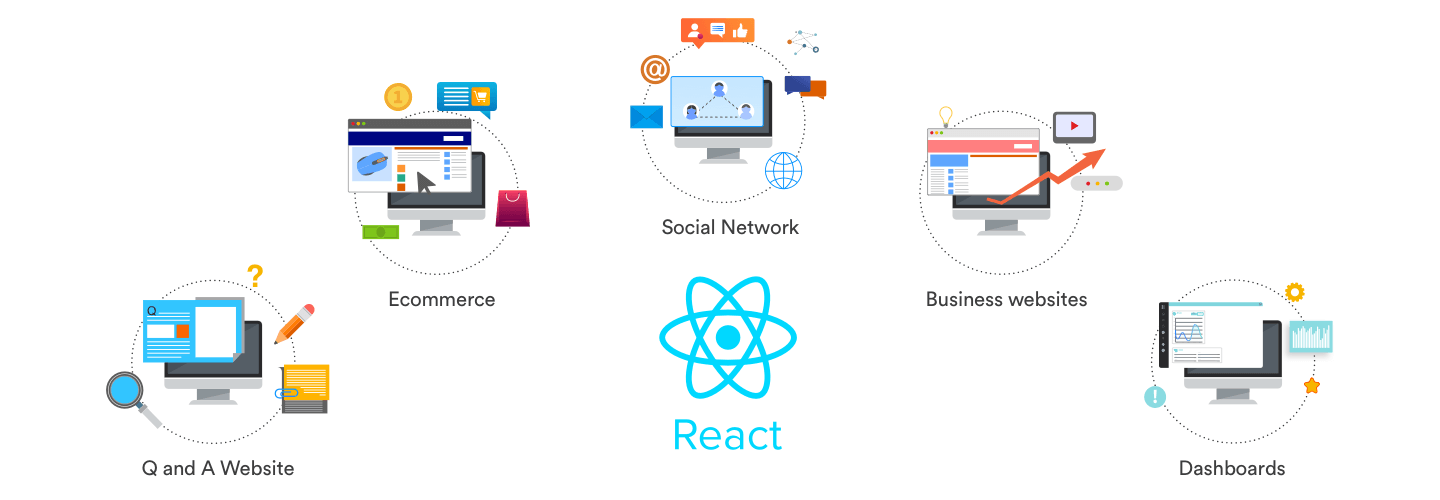Index Surge: Amplifying Your Insights
Stay updated with the latest trends and news across various industries.
React-tastic Adventures in Component Land
Explore the wonders of React with engaging tips, tricks, and tales from Component Land. Unlock your coding potential today!
Understanding React Components: The Building Blocks of Your Application
React components are the fundamental building blocks of any React application. They encapsulate the UI and its behavior, enabling developers to create reusable UI elements that can be easily managed and maintained. Each component can manage its own state and lifecycle, allowing for dynamic and interactive user experiences. Understanding how to create and utilize components is essential for anyone looking to harness the full power of React. Think of a component as a JavaScript function that returns a React element, which is what gets rendered on the screen.
In React, components can be classified into two main categories: Class Components and Functional Components. Class components are ES6 classes that extend from the React.Component base class and maintain their own internal state. Conversely, functional components are simpler JavaScript functions that receive props as arguments and return React elements. With the introduction of Hooks in React 16.8, functional components can also manage state and lifecycle events, making them increasingly popular among developers. Whichever type you choose, understanding how to structure and compose these components effectively will greatly enhance the performance and scalability of your application.

Top 10 React Hooks You Need to Know for Functional Components
React Hooks have revolutionized the way developers build functional components, making state management and lifecycle methods more accessible and intuitive. If you're looking to enhance your React applications, it's essential to understand the top React hooks that will streamline your coding process. Here are the Top 10 React Hooks You Need to Know:
- useState - This hook is fundamental for managing state in functional components.
- useEffect - Used for handling side effects, such as data fetching and subscriptions.
- useContext - Helps in sharing values across the component tree without passing props manually.
- useReducer - A hook for managing complex state logic, especially in applications with multiple sub-values.
- useRef - Provides a way to store mutable values that do not cause re-renders.
- useMemo - Optimizes performance by memoizing the expensive calculations.
- useCallback - Returns a memoized callback function to optimize performance when passing callbacks down components.
- useLayoutEffect - Similar to useEffect, but it fires synchronously after all DOM mutations.
- useImperativeHandle - Customizes the instance value that is exposed when using ref.
- useDebugValue - Displays a label in React DevTools for custom hooks.
How to Optimize Your React Component Performance: Tips and Tricks
When optimizing your React component performance, it’s crucial to understand how React handles rendering. One effective strategy is to use memoization. By wrapping your components in React.memo, you can prevent unnecessary re-renders when the props haven't changed. Additionally, utilizing the useCallback and useMemo hooks can help to optimize performance for functions and values that are passed as props, reducing the computational overhead incurred during rendering.
Another key aspect is to implement lazy loading for components using React.lazy and Suspense. This allows you to split your code and only load the components that are necessary at any given time, enhancing your application's load time significantly. Also, consider using a library like React Virtualized to efficiently render large lists by only displaying the items currently visible in the viewport, which can dramatically improve performance in cases of heavy UI rendering.